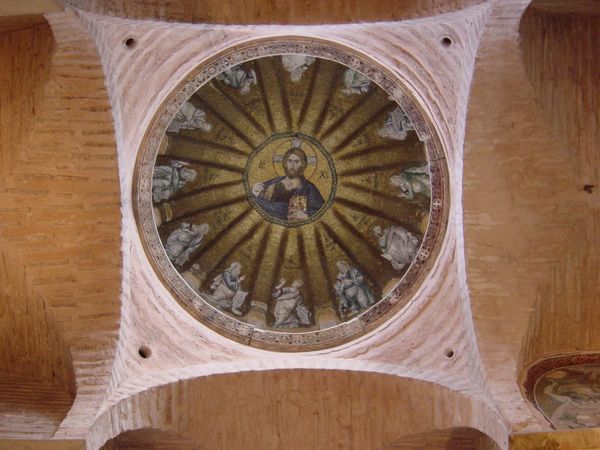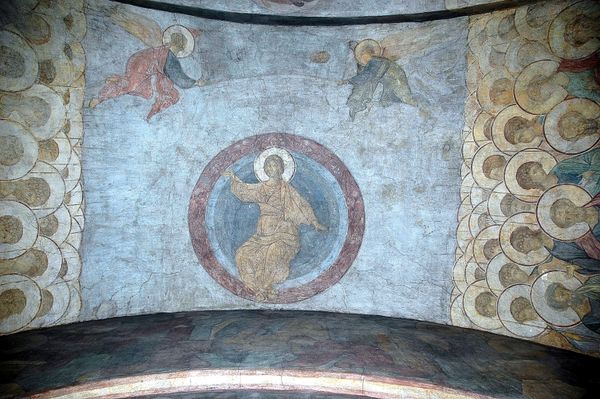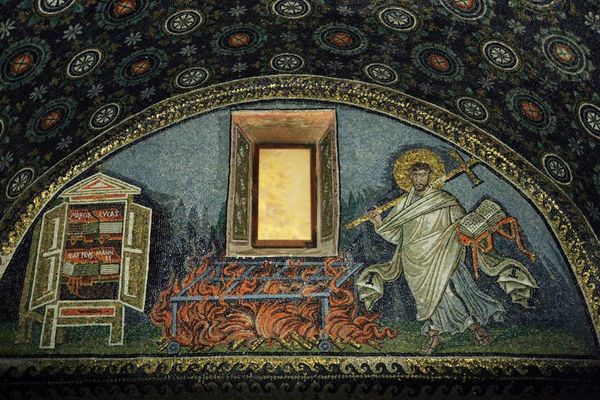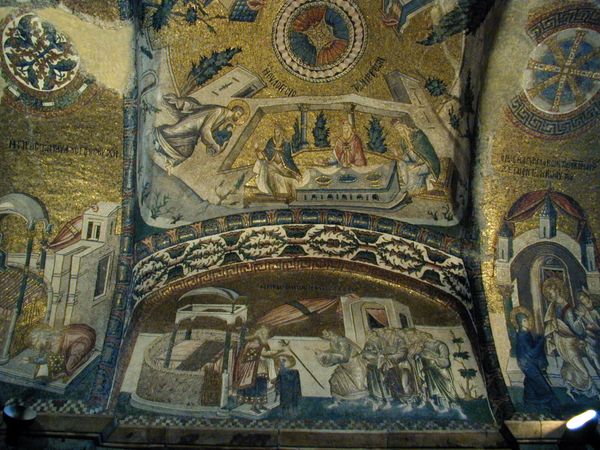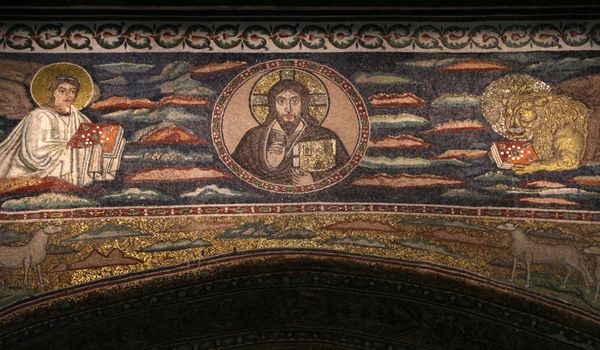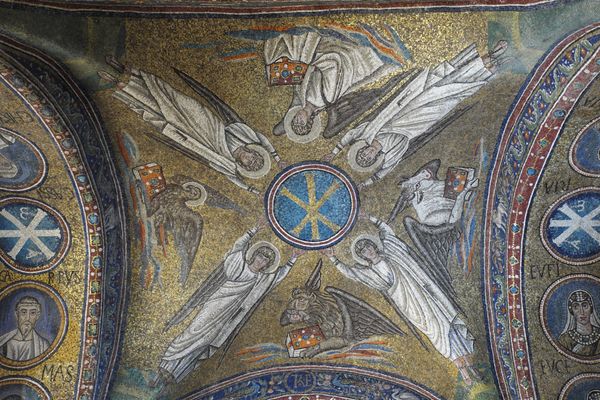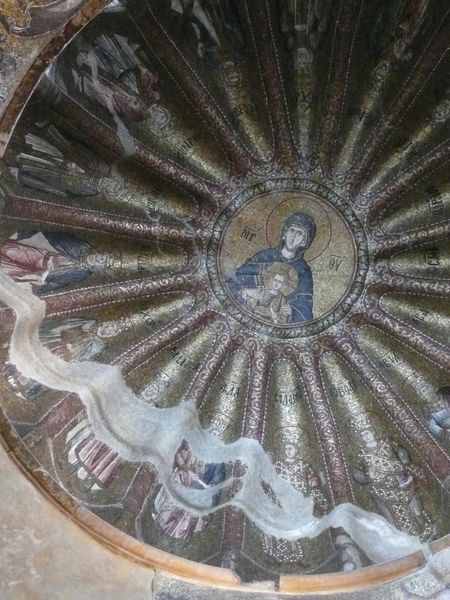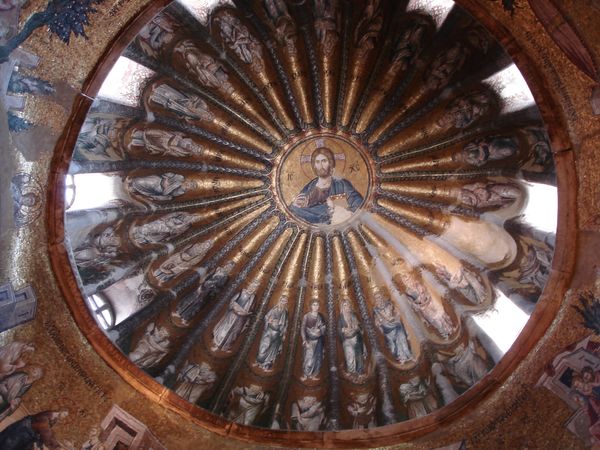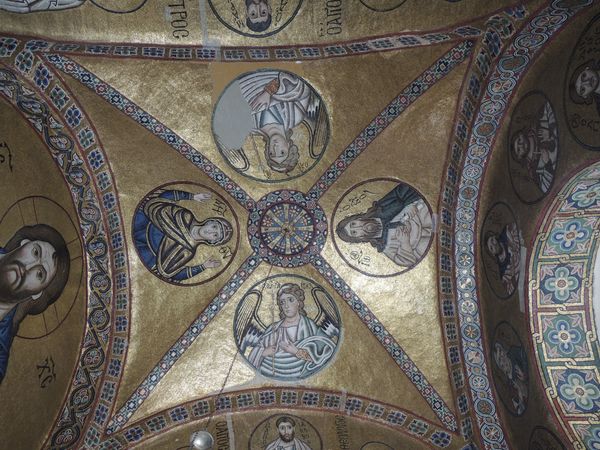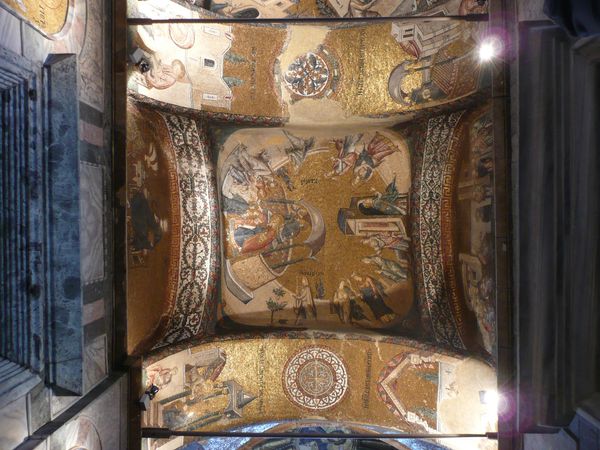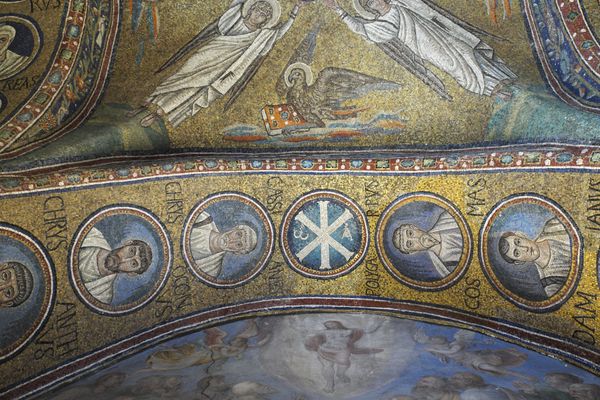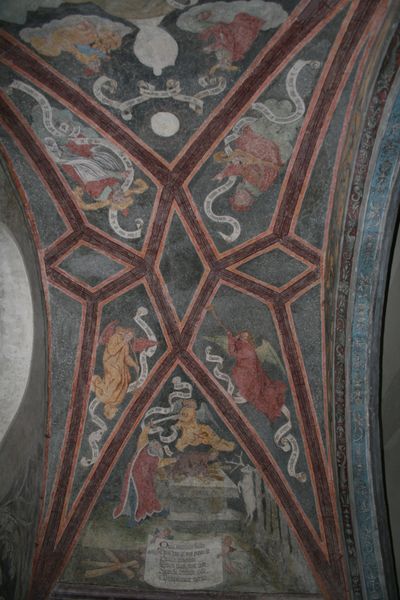
Soffitto Del Mausoleo Di Galla Placidia 425
0:00
0:00
byzantinemosaics
Mausoleum of Galla Placidia, Ravenna, Italy
mosaic, architecture
#
mosaic
#
byzantine-art
#
sculpture
#
holy-places
#
figuration
#
historic architecture
#
traditional architecture
#
geometric
#
decorative-art
#
architecture
Copyright: Public domain
Editor: Here we have the ceiling of the Mausoleum of Galla Placidia in Ravenna, Italy, dating back to 425. It’s an amazing mosaic of deep blue and gold. It has a powerful calming feeling… a celestial vault. What strikes you about this piece? Curator: The Mausoleum’s mosaics offer a lens into the complex power dynamics of the early 5th century. Galla Placidia was a powerful woman, a Roman Empress who ruled as regent for her son. Knowing this, how does this visual representation of heaven – a space usually associated with male divinity – challenge traditional patriarchal structures? Editor: So, the very act of Placidia commissioning such a vibrant and commanding image of the afterlife is, in itself, a political statement? Curator: Precisely! The mosaic's deep blue, studded with gold stars and featuring a prominent golden cross, presents a carefully constructed image of imperial power intertwined with Christian symbolism. The cross becomes an emblem not just of religious authority but of Placidia's own earthly authority, subtly aligning her reign with divine will. What do you make of the contrasting figures lining the edges? Editor: I notice they almost seem to be guarding the central scene. How are those figures reinforcing or challenging the patriarchal interpretations you mentioned? Curator: Consider their garments, gestures, and placement. Do they participate in this "heaven," or do they occupy a liminal space, reflecting perhaps the earthly constraints even powerful women like Placidia faced? We must also look at what is *not* depicted, who is excluded from this vision of the cosmos. Editor: It makes me think about how even seemingly sacred spaces can be deliberately constructed to make claims about power. I hadn’t thought about how a "heavenly" scene can be read through the lens of gender and power. Curator: Indeed! And by questioning whose vision of heaven is being presented, we can begin to understand how even in art, dominant narratives are shaped and contested. Thank you for your observations, it makes a good step forward to unveiling layers of meaning behind seemingly serene surfaces.
Comments
No comments
Be the first to comment and join the conversation on the ultimate creative platform.
